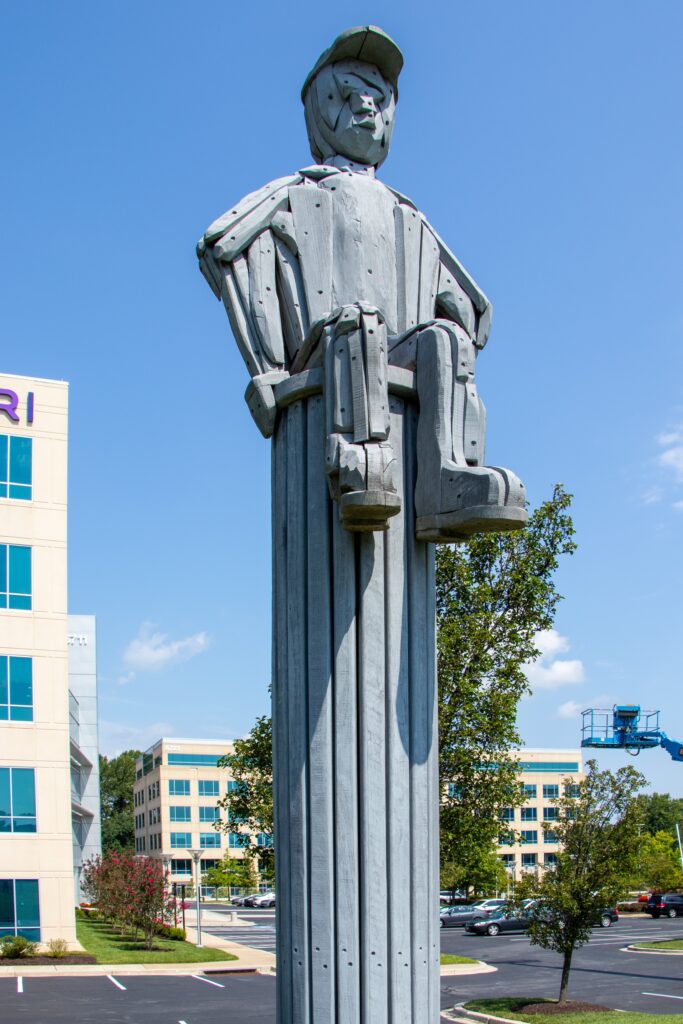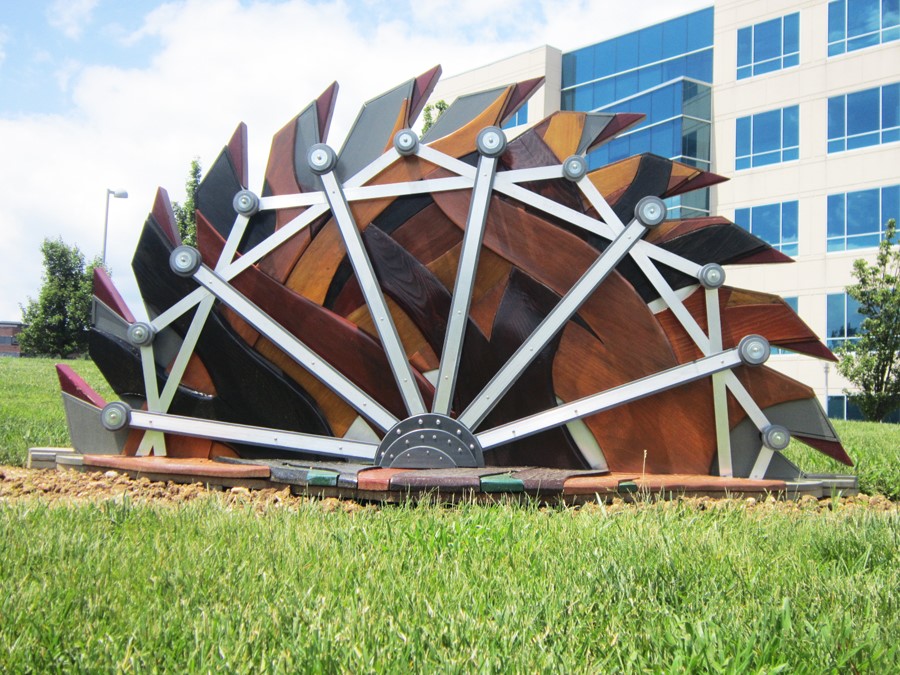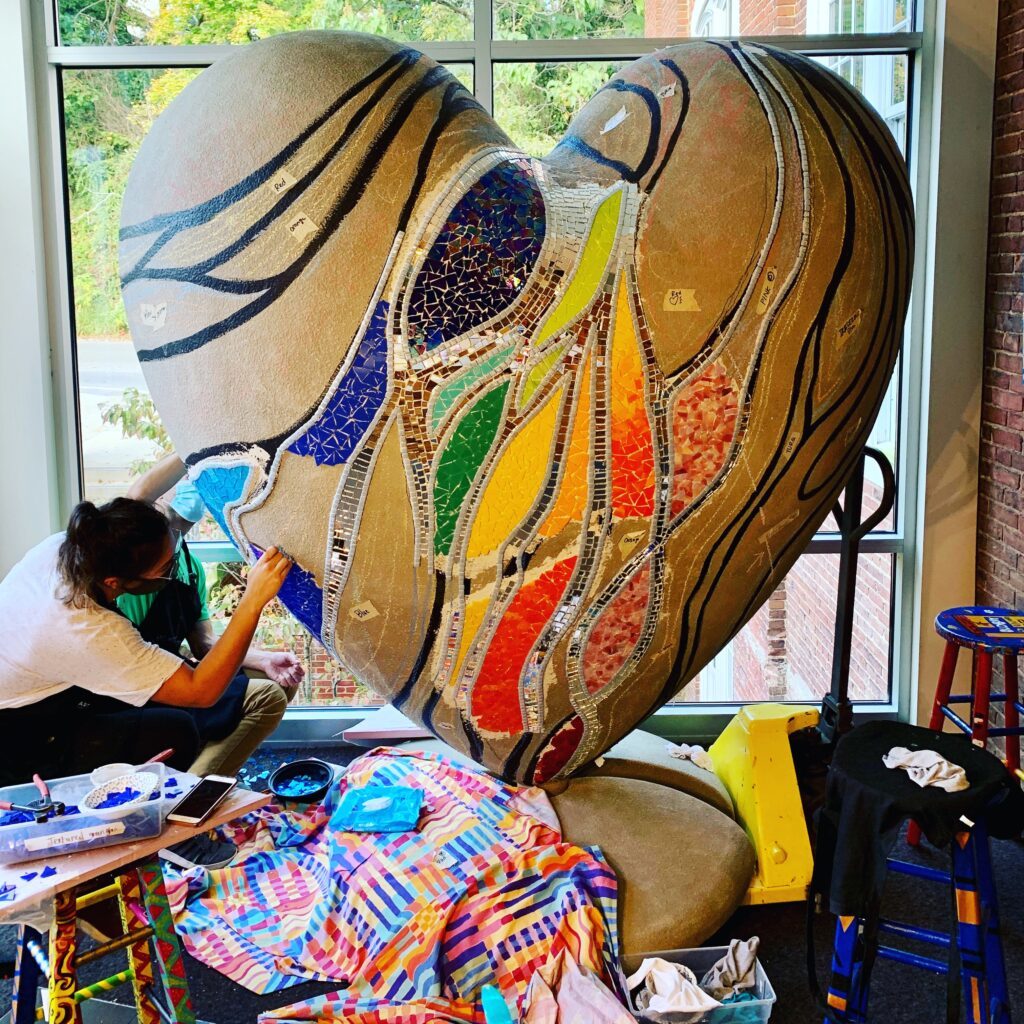How public art projects strengthen properties, communities and people
Perched high above the stream of business park traffic, Ordinary Person sits and watches the workday pass. The sculpture by local artist Charlie Brouwer features a classically shaped column, typically used in monuments to historical figures. But the individual on top is ordinary and sculpted in primitive fashion from black locust wood and deck screws. The piece pays tribute to the quiet and often unrecognized value of every ordinary person.
“It’s such a wonderful piece for the times that we are in right now. It’s very contemplative,” said Julie Hughes Jenkins, Vice President of Design + Interior Construction at Corporate Office Properties Trust (COPT).

COPT arranged to have the sculpture installed on the grounds of its headquarters as part of ARTsites 2020 – an annual collaboration by the Howard County Arts Council, corporate partners and local artists to install about a dozen new sculptures around the county.
“The program’s purpose is to expose people to beautiful art and exterior sculpture that is approachable. It allows people to get outside, walk and experience art,” Hughes Jenkins said.
COPT has participated in the program for more than a decade in addition to volunteering with and donating to arts councils in multiple jurisdictions where it has properties. It has helped fund art installations ranging from Yellow Clown (a previous ARTsites piece) to the 9/11 Memorial at the World Trade Center in Baltimore.
Furthermore, “when we do the master planning for our business parks, we always look for space and alott budget for exterior art or sculpture,” Hughes Jenkins said. “Part of our core values is supporting the communities where we operate and we embrace art as an integral part of placemaking and a way to enhance the overall experience a person has in business parks and public spaces.”
COPT, which has assembled a collection of about 550 original artworks, believes in commissioning artists to design pieces uniquely suited to each site. At The National Business Park, for example, COPT installed seven outdoor sculptures.

Due to the nature of their work, many employees onsite “work in enclosed spaces without views to the outside… To be able to get outside and walk and enjoy nature and beautiful sculpture is a nice respite for them, a relief from the very serious work they do day in and day out protecting our country,” she said.
Those art installations have even become the source of activities that enrich the local community. While commissioning one exterior sculpture for National Business Park, COPT invited local schools to participate in the process. As a result, “kids from elementary to high school came out to the site, did drawings of the sculpture and talked about what it evoked in them. When we did the unveiling, we displayed all their pictures that showed the kids’ interpretation of our sculpture,” Hughes Jenkins said.
Public art projects – whether they are installed on commercial, nonprofit or public sites – can deliver a wide array of benefits from supporting local artists, growing the arts economy, beautifying neighborhoods and business districts, and supporting education, social service and workforce development programs.

The Baltimore City-based nonprofit Art With A Heart has completed more than 300 public art installations locally, mostly commissioned by companies, nonprofits and government agencies. Those commissions which are primarily created by students and volunteers, help fund Art With A Heart’s programs. Those include visual arts classes at schools, community centers, group homes, shelters, hospitals and senior housing facilities. There is a retail enterprise that sells the works of emerging artists and raises money for multiple, associated nonprofits. There is a workforce development program for under-resourced youth that results in over 70 percent of participants securing stable employment.
In the midst of the pandemic, which has wiped out 50 percent of Art With A Heart’s budget, Founder Randi Pupkin says it is more important than ever for companies, nonprofits and governments to support the community through public art.
“Especially now, I believe that art helps elevate a community. It’s like delivering love and light to somebody,” Pupkin said. “The benefit comes not just from looking at the art, but creating it. It’s important to the soul. We have volunteers who are in their 80s but they are still volunteering, because this is giving them life.”